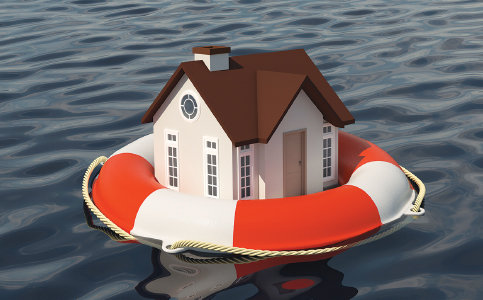
The growing ferocity and frequency of extreme weather events, tied intrinsically to the rapidly changing climate, have sent shockwaves through sectors that once thrived on predictability and historical data – notably, the insurance and housing markets. Jacob Bogage’s recent Washington Post article encapsulates the urgency and gravity of the situation, focusing on how major insurers are pulling away from covering the very natural disasters that are increasing in frequency.
Insurance companies, at their core, are in the business of evaluating and pricing risk. Historically, they've spread these risks across various geographies and disaster types, ensuring that catastrophic payouts in one region are balanced by calmer conditions elsewhere. However, as the article highlights, changing climate patterns are disrupting this model. With wildfires now a year-round menace and hurricane patterns more unpredictable than ever, the long-standing metrics insurers used are rapidly becoming obsolete. The consequence? Major insurers like Allstate and Nationwide are excluding vital protections, like those against wind or hail damage, or are withdrawing from high-risk regions altogether.
On the surface, these moves seem like purely business decisions, necessary to ensure the survival and profitability of the insurance firms. But delve deeper, and one uncovers a ripple effect that extends far beyond the insurance sector and into the lives of homeowners and the dynamics of the housing market.
The primary concern emerges for homeowners, especially those in areas newly designated as high risk. As Bogage underscores, homeowners who once felt secure under the protection of their insurance may suddenly find themselves exposed to the full brunt of a natural disaster. Their predicament is twofold: not only are they at heightened risk of personal and property loss, but they also stand to violate the terms of their mortgage agreements which typically mandate certain insurance coverage.
Then there's the housing market itself. The value of homes in regions labeled as 'high risk' by insurers is likely to decline, as prospective buyers factor in the potential challenge of securing affordable insurance – or any insurance at all. This could lead to pockets of properties that neither sell nor appreciate, effectively creating "insurance deserts" where homes are hard to insure and thus less attractive to potential buyers.
Lenders, too, find themselves at a crossroads. While insurance is traditionally mandated to protect the lender's investment, what happens when such insurance is unaffordable or unavailable? Do they relax their lending criteria or perhaps incorporate higher risk premiums into their loan terms?
Furthermore, state-backed insurance solutions, while commendable, may not be sustainable in the long run, especially if they take on the bulk of high-risk properties. As highlighted, the fact that insurance giants, with all their financial clout, are finding it hard to sustain losses in these regions, makes one question the viability of state entities stepping into their shoes. The unfortunate reality is that taxpayers could bear the brunt of this through increased premiums or even potential bailouts of state-backed insurance schemes.
The crisis underscores a pivotal need for innovative thinking and a multi-pronged approach. The situation calls for the creation of new insurance products, perhaps community-based ones, which pool risks at a local level. Homebuilders and urban planners will need to integrate climate resilience into their designs and masterplans. Governments will have to invest in infrastructure that mitigates the impacts of extreme weather events and consider subsidizing insurance in high-risk areas to prevent a housing market crash.
The interplay of global warming, insurance, and the housing market is a manifestation of a world grappling with unprecedented change. While the challenges are considerable, they also present an opportunity for industry innovation, government intervention, and community resilience – a triad that might just form the bedrock for our adaptation to a rapidly changing climate landscape.
Posted by Tim Bray on
Leave A Comment